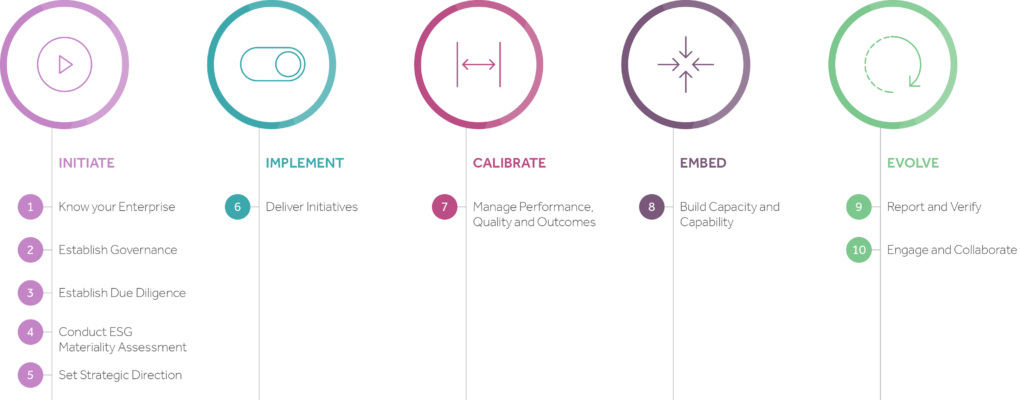
I love language. I particularly love words with multiple meanings as they can be clear and straightforward or layered and nuanced depending on the context within which you use it. That is why I can feel a little disheartened when I see certain words, particularly in business, narrowed semantically to one dominant connotation. The word Sustainability springs to mind.
When I first talk to my clients about sustainability it quickly becomes clear that they many equate the word sustainability with environmentalism. They talk about emissions, waste and water and they see sustainability as a siloed activity which can be managed by an individual or team within the organisation. While environmentalism is an important aspect of sustainability, it is not nearly the full picture. This is why I always encourage businesses to think more roundly about the word sustainability.
At its very essence what does it mean to say your business is sustainable? It means you can maintain your business into the future. Your business remains viable.
What would help your business sustain itself into the future? Becoming resilient. Perceiving threats before they occur and avoiding or mitigating these. Being aware of your impact on others so you can avoid or mitigate negative impact which will impede your ability to sustain your business. Enhancing opportunities and realising benefits associated with positive impact so you can grow your business. The ability to react to a shifting, volatile external landscape in real-time so you can survive the turmoil.
The European legalisation of sustainability reporting (CSRD) has helped guide companies somewhat to think about impact, risk and opportunity by requiring them to complete a double materiality assessment, but in some instances, I feel this is a case of the tail wagging the dog. Companies are letting their sustainability report drive their actions without fully embracing the opportunity they have to thoroughly examine their resilience. They are following instructions by rote without fully engaging or investing in the process. They are ticking the box.

A sustainability report should be a reflection of a company’s sustainability, it should not be its outcome. The outcome of sustainability should be the ability for a company to sustain itself long into the future because it has thoroughly examined its business model and value chain and equipped itself with in-depth knowledge of its dependencies, vulnerabilities, impacts, risks and opportunities. Knowledge which empowers the company to pivot at a moment’s notice in the event of unforeseen external forces.
Like COVID-19. Like the Suez Canal and Panama Canal blockages. Like Cyber Attacks. Like association with War and Genocide. Like Tariffs.
The essence of sustainability is to empower companies to stay in business. Knowledge is Power. That is why the very first step in RBESG’s STS (Sustainability Transformation System) is “Know Your Enterprise”. Before a company can embark on its impact, risk and opportunity assessment (DMA), it must know its own business inside out. This may sound obvious but it is so common for companies to lose that helicopter, end-to-end view of their business through different growth phases and with the transition of core people out of their business over the years.

Investing the time into understanding your business can only help you prepare for volatility. What does your business depend on? Are these critical dependencies? Who does it depend on? Where are these people and businesses located? What are their concerns? Who do these people and businesses in turn depend on and where are they located? Are there any single points of failure in the value chain? Does your company have options and choice? What is the maximum price you can pay for any one input and how much wriggle room do you have currently? How much uncertainty can you handle?
With each new global event that threatens businesses, I think to myself “it will happen now”. Businesses will realise that sustainability is a necessity, it’s not a nice to have. Unfortunately, many don’t.
Some weather the storm, emerging bruised and battered, less able for the next battle and some don’t. Faced with the odds and this latest threat of a global economic recession, what will you do? Will you stress and worry about your company’s future or will you take the time to reassess what sustainability can do for your business?
Empower yourself.
If this article resonated with you and you would like help mapping out your business model and value chain and/or assessing your impact, risk and opportunity, we at RBESG would love to help. Please drop us a line at info@rbesg.com or send us a message through our website and we’ll get straight back to you.





